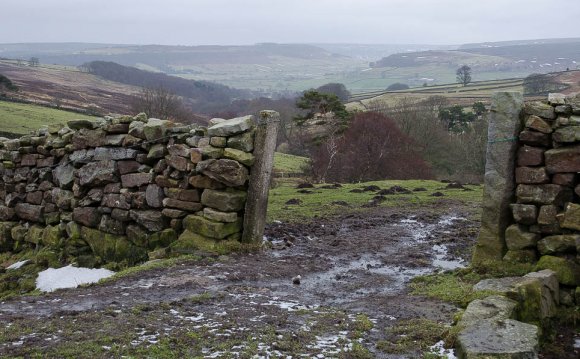
 Be prepared for grand landscapes and big views on this North York Moors classic. Starting with the dramatic panorama from Saltergate over the Hole of Horcum, the 5-mile scenic walk follows a prominent track over Levisham Moor, past important archaeological remains. There’s a possible diversion to the stunning viewpoint of Skelton Tower, after which the route drops into the rocky ravine of Dundale Griff and returns along the valley to the Hole of Horcum, climbing back out at Saltergate.
Be prepared for grand landscapes and big views on this North York Moors classic. Starting with the dramatic panorama from Saltergate over the Hole of Horcum, the 5-mile scenic walk follows a prominent track over Levisham Moor, past important archaeological remains. There’s a possible diversion to the stunning viewpoint of Skelton Tower, after which the route drops into the rocky ravine of Dundale Griff and returns along the valley to the Hole of Horcum, climbing back out at Saltergate.
Walk info
Great for: more than a stroll, history buffs, big-sky views, list-tickers Length: 5 miles/8km (7 miles/11km with diversion) Time: 3 hours (4 hours with diversion) Start/Finish: Saltergate car park, A169 (Pickering to Whitby road) Grid Ref: SE 853 937 OS Map: Ordnance Survey OL27 Refreshments: Lockton (3 miles/4.8km) and Thornton le Dale (7 miles/11km) Toilets: None on the routeAbout this walk
The broad track across Levisham Moor is easy to follow, but it can be muddy in places. Be prepared for poor visibility in bad weather. The ravine of Dundale Griff can be dangerous, with slippery surfaces and falling rocks – keep to the path at all times.
On moorland, it's important to keep your dog on a short lead (less than 2 metres) between 1 March and 31 July when rare birds are nesting on the ground. At all other times please keep your dog on a lead or to heel, and always on a lead near livestock.
Hole of Horcum
The Hole of Horcum is one of the most spectacular features in the National Park – a huge natural amphitheatre 400 feet deep and more than half a mile across. Legends hang easily upon a place known as the 'Devil's Punchbowl' – the best-known says that it was formed when Wade the Giant scooped up a handful of earth to throw at his wife during an argument.
Actually, it was created by a process called spring-sapping, whereby water welling up from the hillside has gradually undermined the slopes above, eating the rocks away grain by grain. Over thousands of years, a once narrow valley has widened and deepened into an enormous cauldron – and the process still continues today.
Levisham Moor
The track across Levisham Moor runs through a landscape rich in archaeological remains – in fact the moor itself is the largest ancient monument in the North York Moors. Half-hidden in the heather are traces of human occupation stretching back thousands of years, from Bronze Age barrows to late Iron Age boundary dykes. These mounds, ditches, banks and ridges are evidence of burial sites, fortified farmsteads, enclosures and field systems – hard to spot at first glance but obvious once identified.
In medieval times, a monastic sheep farm (or bercary) was established at the head of Dundale Griff, and the foundations of stone buildings can still be seen. It's important to keep to the path on the route from Dundale Pond to Skelton Tower, in order to preserve the remains.
Skelton Tower
Ruined Skelton Tower offers an extraordinary view down into Newtondale and over the track of the North Yorkshire Moors Railway. Built around 1830 by Robert Skelton, rector of Levisham, it was once used as overnight lodgings after a day's shooting on the moors. The grassy headland is a wonderful spot for a picnic, and you'll hear the whistle of the steam trains below in plenty of time for a photograph.
Did you know?
The Hole of Horcum is the most southerly place in Britain where you can see the rare dwarf cornel, an arctic-alpine plant usually found in much colder conditions.
Like this walk?
Find out lots more about the local history, legends and wildlife with the 'Levisham & Horcum Guide for Adventurers', available from our visitor centres – and from our mobile information unit parked at Saltergate car park in the summer.
YOU MIGHT ALSO LIKE












